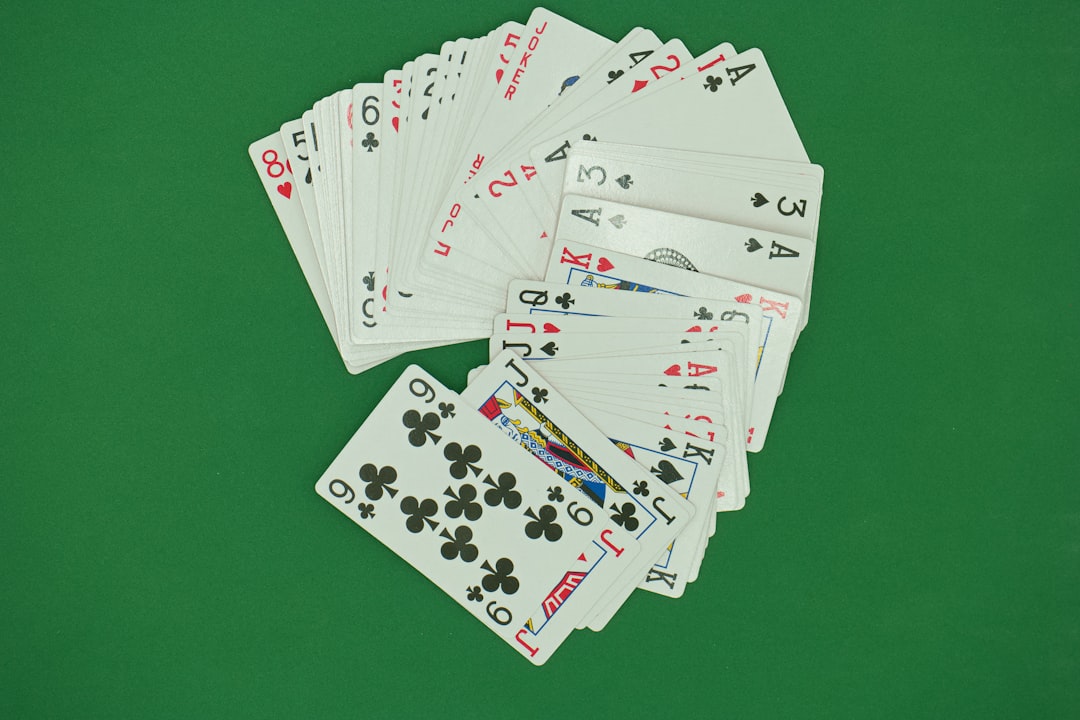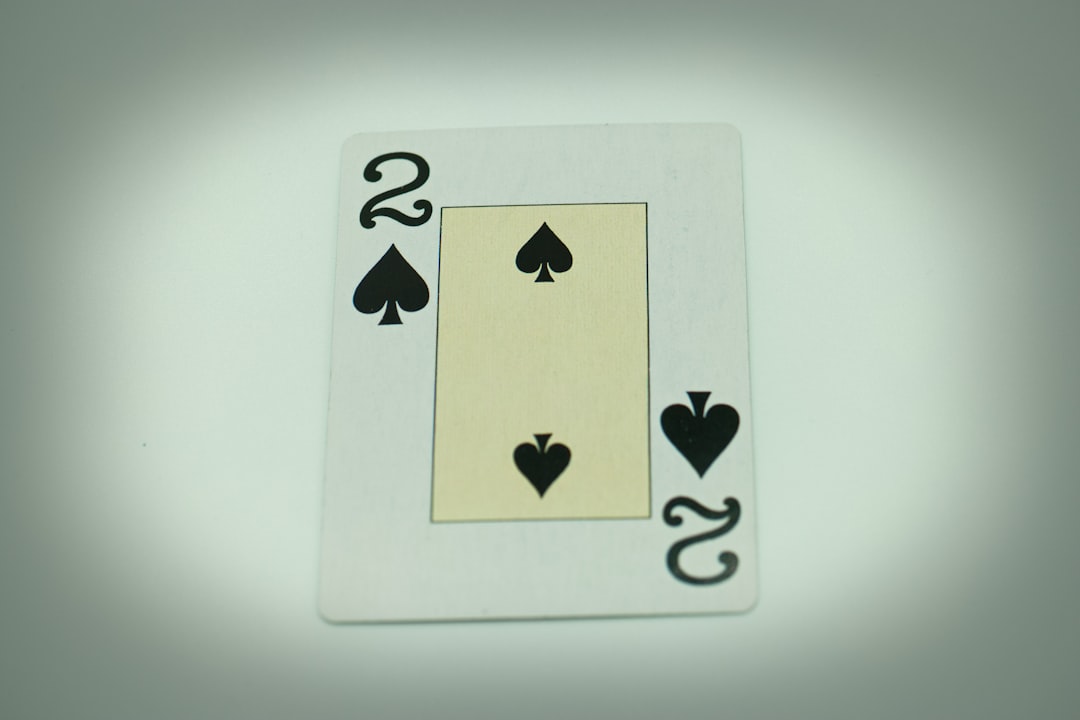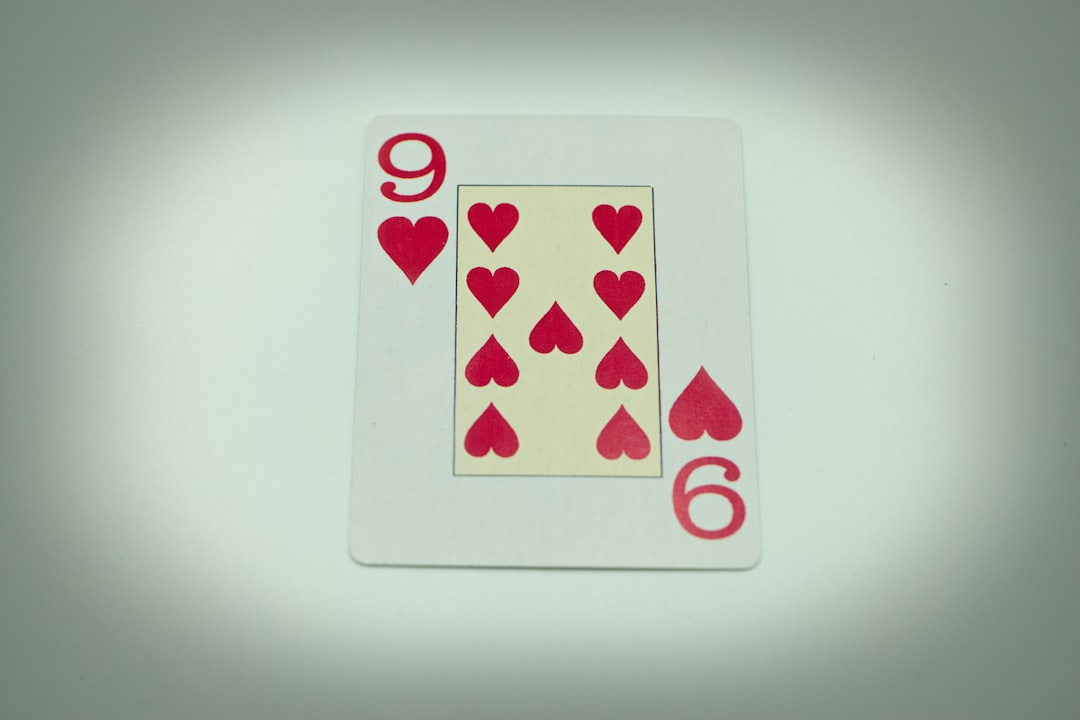

Engage prospects with a scan and streamline customer engagement with FREE QR code marketing tools by Sona – no strings attached!
Create a Free QR CodeFree consultation

No commitment

Engage prospects with a scan and streamline customer engagement with FREE QR code marketing tools by Sona – no strings attached!
Create a Free QR CodeFree consultation

No commitment
In today’s digitally connected retail landscape, playing card retailers face a sharper challenge than ever: how to capture attention in the aisle, keep momentum after purchase, and turn curiosity into measurable engagement. Collectors and casual players discover limited runs, admire foil-stamped tuck boxes, and handle premium stock in person; yet many never sign up for updates, join a loyalty program, or reveal what sparked their interest. Those missed interactions create blind spots in the funnel, making it difficult to attribute revenue or tailor follow-ups. That is where disciplined revenue attribution becomes essential.
QR codes turn tactile assets into digital gateways. When placed on deck packaging, display signage, event materials, or receipts, a single scan can lead shoppers to drop pages, product provenance, tutorials, restocks, or exclusive communities, a concept often explored in board game cards. The same scan also produces a signal: who engaged, when, and where. That signal fuels smarter retargeting, higher conversion, and better lifetime value without adding friction for customers or staff.
Used strategically, QR codes in marketing give playing card retailers something they have lacked for years: a simple, scalable way to connect offline engagement to online action. The payoff is meaningful. Retailers can finally measure which decks or displays drive interest, recover lost leads, and provide the kind of personalized experiences that turn one-time buyers into lifelong collectors.

QR codes bridge the gap between physical products and digital engagement. For playing card retailers, they eliminate guesswork about who is interested and why. Instead of hoping that a shopper remembers a URL or searches for a product page later, you present a friendly, scannable prompt at the exact moment of intent. That prompt opens a path to exclusive content, restock alerts, or loyalty programs, which builds trust and validates the purchase decision.
To see real impact, design your QR strategy around moments that matter. Replace static processes like printed catalogs and manual giveaway entries with scannable journeys from Sona QR’s use case library that collect consented data and map interest to specific decks or campaigns. Define the metrics that demonstrate success to stakeholders, then iterate against those benchmarks. Treat every code as a trackable touchpoint that you can test, optimize, and scale.
Modern platforms like Sona QR make it straightforward to build and manage these programs at scale. You can centralize code creation, update destinations without reprinting, and connect scan events to CRM or ad platforms so that follow-ups happen automatically rather than relying on luck or memory. Start creating QR codes for free.

Playing card retailers operate at the intersection of craft and culture. Shoppers care about stories behind the art, the feel of the stock, and the rarity of the print run. They also expect effortless discovery and instant gratification. The result is a growing gap between beautiful physical experiences and the data-driven digital engagement needed to sustain growth. QR codes close that gap by making every physical touchpoint an immediate bridge to context, content, and conversion.
Without QR codes, most in-store engagement is invisible. Customers flip through display decks, check out tuck box finishes, or ask about restocks, then walk away without leaving a trace. With QR codes, that curiosity transforms into a measurable signal and a relationship-building opportunity. Shoppers can scan to register a deck, authenticate limited runs with promotional playing cards, sign up for restock alerts, or watch tutorials that deepen appreciation of the product they already love.
For retailers, the advantage is control and clarity. Instead of guessing what worked, you learn which decks, displays, or events drove measurable outcomes, and you can fine-tune the next campaign to maximize engagement and revenue.

Flexibility is essential, because customer journeys are varied. A collector at a convention has different needs than a casual shopper at a neighborhood store or a B2B buyer browsing wholesale catalogs. The right QR format lets you match the intent to the action, then route scanners to the appropriate destination with minimal friction.
The most effective options for playing card retailers prioritize information, sign-ups, and trackability. While all QR formats have value, you will get outsized results from formats that streamline education, capture interest, and support enterprise contacts in B2B contexts. Dynamic codes play a key role by keeping content fresh as inventory and promotions evolve.
Retailers using Sona QR can generate and manage these formats in one place. You get control over creative elements like frames and logos, granular tracking, and the ability to edit destinations in real time.

Not every surface deserves a QR code, but many high-visibility points in the playing card journey are perfect candidates. The goal is to intercept attention when curiosity peaks, then offer a fast path to something valuable. Prioritize placements where the scanner’s context is clear so that you can personalize the experience and build accurate attribution.
Look for moments that already draw crowds or questions. Limited-edition releases, in-store demos, and tournament tables create natural hubs of interest. By placing unique, context-aware codes in those spaces, you can identify which audiences engage most and figure out where your marketing dollars are most effective.
When you pair smart placements with analytics, every touchpoint becomes a growth lever. You do not just get more scans. You get attribution that tells you what to scale, what to cut, and how to time your next release.
The best QR campaigns are specific. Focus on concrete interactions that repeat across your business so that the data you collect is consistent and actionable. These use cases efficiently convert curiosity into relationships and provide measurable outcomes such as scan-to-signup rates, review completion rates, and repeat purchase lifts.
Two patterns tend to dominate in this category: the collector’s journey and the B2B buyer’s journey. Collectors care about provenance, early access, and community. B2B buyers care about catalog depth, wholesale terms, and custom orders. QR codes can serve both with targeted destinations that reflect each audience’s priorities.
These examples convert fleeting interest into a digital thread that you can track. Over time, you will see patterns by location, edition, and buyer type that help you plan inventory and marketing more effectively.
Every scan is a moment of intent, but not every intent is the same. Someone scanning a limited deck’s insert is different from a passerby scanning a window cling. By deploying unique codes across your journey stages and tagging audiences based on what they scanned, you build a system that values context as much as clicks. The result is smarter intent-driven retargeting, less wasted spend, and higher conversion rates.
Start by mapping your funnel. Awareness scans often happen on out-of-home displays or event signage. Consideration scans happen on product displays or educational content. Conversion scans happen near checkout or on packaging. Align codes to these stages so your follow-ups reflect where the buyer is in the journey and what they are likely to do next.
For playing card retailers, useful audience distinctions include collectors versus casual buyers, local store regulars versus online shoppers, and B2C purchasers versus B2B resellers. Tailor content accordingly: collectors get early-access invites, casual buyers get tutorials and bundles, resellers get catalogs and wholesale terms.
QR codes do their best work when they are woven into your broader marketing ecosystem. They transform print from passive to interactive, make events measurable, and give social campaigns an offline entry point. The key is to anchor each channel’s content to a trackable destination, then treat scan data as a trigger for personalized follow-ups.
Because playing cards are such a visual and tactile category, you will likely use a mix of packaging, in-store signage, direct mail, and events. QR codes bind those channels together, letting you follow a single collector from a convention booth to a VIP list, then toward a preorder. What was once an anecdotal journey becomes a clearly measured pipeline.
With a centralized platform like Sona QR, you can manage codes across channels, monitor performance in real time, and sync scan data to your CRM so no lead is lost between touchpoints.
A great QR program starts with clarity: what problem are you solving, which audience will scan, and what action you want them to take next. The following checklist distills best practices into a repeatable playbook that you can adapt to each campaign. Use these steps to ensure solid foundations, frictionless experiences, and measurable outcomes that you can present to stakeholders.
Think of each step as a lever. Defining a use case aligns your team. Choosing the right code type determines flexibility. Design and testing impact scan rates. Strategic deployment maximizes visibility. Tracking and optimization transform raw activity into revenue insight.
Identify the specific business challenge that the campaign will address. You might be missing out on repeat purchases because buyers do not register their decks, or you may be unable to track giveaway participants at conventions. A focused use case ensures your creative and your landing experience map to a clear outcome.
Not all QR codes are the same. For long-lived materials, dynamic codes give you control to update destinations as stock changes or campaigns shift. For short-term assets, static links can be sufficient. Choose based on your need for flexibility, data, and scale.
Design influences scan rates. Make the code visually appealing, clearly branded, and easy to scan. Then test the code in realistic conditions to prevent avoidable friction.
Place codes where intent peaks. Consider journey stage, line of sight, and scanning ergonomics. Use unique codes per placement so you can measure performance by location and creative.
Measurement turns scans into strategy. Set up analytics and integrate with your CRM so you see not only who scanned but what they did next. Optimize campaigns while they are live.
A checklist mindset keeps your team aligned and your outcomes predictable. When every step is measurable, you can show how QR programs reduce waste, increase conversions, and prove revenue attribution across channels.
Scan counts alone do not prove impact. The real value comes from connecting each scan to downstream behavior: registrations, loyalty enrollments, coupon claims, add-on purchases, and repeat orders. With the right analytics approach, you can connect physical touchpoints to digital outcomes and make confident decisions about creative, media, and inventory.
A mature measurement stack works across time scales. In the short term, you track scan spikes by channel and adjust creative. Over weeks and months, you attribute repeat purchases to prior scans and identify the placements with the best lift in lifetime value. This is where a platform that unifies creation, tracking, and attribution pays dividends.
By focusing on attribution that goes beyond click-through, you can prove that a code on a tuck flap or a shelf talker did more than capture attention. It catalyzed a specific outcome that contributed to revenue.
Scaling a QR program requires both operational discipline and creative flair. The basics drive reliability: unique codes, clean attribution, and tight integrations. Creative deployment ideas keep the experience fresh and worth scanning. Together they create compounding gains over time.
Keep in mind that the best QR experience is the one people actually use. Educate staff to promote scanning, make the value obvious, and keep the payoff instant. A five-second reward can be worth far more than a five-minute form.
These practices turn QR from a novelty into a growth system. As you collect more scan data, your targeting improves, and your campaigns become predictably effective.

Innovation in this space often looks deceptively simple. The best ideas pair a specific moment of curiosity with an immediate, valuable payoff. When executed cleanly, even small placements can reveal big opportunities hiding in plain sight.
Consider the impact of storytelling. Retailers that use QR to share the backstory of a design, showcase the artist, or demonstrate a flourish often see higher engagement and stronger community sentiment. The code becomes a bridge to the brand’s personality, not just a link to a product page.
Use these examples as templates. Combine a precise context, a compelling reward, and a clear next step. The output is a program that delights customers and delivers proof of impact.
For playing card retailers, QR codes are not just shortcuts. They are a strategy to transform every physical surface into a digital bridge. By connecting offline moments to online destinations and by capturing the signals that come with each scan, you overcome the visibility gaps that have long made attribution and personalization difficult in this category.
The value compounds as your program matures. Codes on packaging drive registrations and early-access lists. Event codes reveal which communities are most engaged. In-store signage codes unlock loyalty and reviews. With Sona QR for code creation and management, and Sona.com for attribution, you can connect scans to revenue, direct spend to what works, and build a predictable engine for growth.
When you bring it all together, you get more than engagement. You build a connected customer journey that moves people from awareness to action. You collect actionable data that turns each scan into a signal for smarter campaigns. Most importantly, you cultivate relationships with collectors and players who feel seen, supported, and excited to come back for the next drop.
QR codes have transformed playing card retailers from simple point-of-sale interactions into powerful, measurable engagement channels. Whether it’s attracting new customers, enhancing in-store experiences, or providing instant access to exclusive content and promotions, QR codes replace traditional marketing with mobile-friendly, interactive touchpoints that capture valuable data and boost sales. Imagine knowing exactly which decks, displays, or events spark the most interest—and acting on that insight in real time.
With Sona QR, you can easily create dynamic, trackable QR codes that update instantly without the need to reprint packaging or signage. Connect every scan directly to customer behavior and revenue, optimize your campaigns on the fly, and turn casual browsers into loyal players. Start for free with Sona QR today and transform your playing card retail strategy into a winning hand.
QR codes can be placed on tuck boxes, seal stickers, collector inserts, and promotional materials to link shoppers to exclusive content, restock alerts, loyalty programs, or authenticity verification, creating measurable digital engagement.
Playing cards offer tactile appeal and collectible value that attract attention, while QR codes on cards turn physical interest into measurable digital signals that improve retargeting, increase conversions, and build lasting customer relationships.
Custom playing cards featuring unique QR codes can be sourced from promotional card providers and platforms such as Zazzle or Alibaba that specialize in QR-coded playing cards suitable for marketing campaigns.
Promotional playing cards with QR codes create interactive experiences by offering authenticity registration, exclusive content, loyalty enrollment, and restock notifications, which deepen customer trust and encourage repeat purchases.
Creative uses include placing QR codes on limited-edition deck flaps for registration, including codes on event swag and badges for giveaways, adding codes to packaging inserts for tutorials, and using QR playing cards as scalable promotional giveaways.
QR codes bridge the gap between physical products and digital engagement, allowing retailers to track customer interactions, personalize follow-ups, measure campaign effectiveness, and convert offline interest into actionable online data.
Dynamic QR codes that can be updated post-printing, web links, forms for registrations or feedback, vCards for B2B contacts, and app or channel links are most effective for engaging different audiences and tracking performance.
High-impact placements include tuck box interiors, shelf talkers, event badges, demo tables, window clings, receipts, and packaging inserts to intercept interest at moments of high intent and capture valuable engagement data.
Retailers can track scan counts, conversion rates, repeat purchases, and customer segmentation via analytics dashboards and CRM integrations, attributing sales and engagement to specific codes, locations, and campaigns.
They should define clear goals and metrics, select appropriate QR code types, design visually appealing and scannable codes with strong CTAs, deploy codes strategically, and continuously track and optimize campaigns based on data.
By using unique QR codes at different funnel stages and tagging scanners by product interest and context, retailers can segment audiences, sync data into CRM and ad platforms, and deliver personalized retargeting campaigns.
QR codes can unify packaging, in-store signage, direct mail, social media, events, and digital content by linking physical touchpoints to trackable digital destinations, enabling consistent measurement and personalized follow-ups.
Use unique codes per placement, add UTM parameters for accurate attribution, automate follow-ups, educate staff and customers about scanning benefits, and deploy creatively on collector checklists, demo tables, and shelf tags.
Examples include limited-edition deck registration on tuck flaps boosting repeat purchases, convention badge codes capturing thousands of contacts, loyalty programs via collectible business cards, restock alerts on shelf talkers, and tutorial-linked packaging inserts.
Use Sona QR's trackable codes to improve customer acquisition and engagement today.
Create Your FREE Trackable QR Code in SecondsJoin results-focused teams combining Sona Platform automation with advanced Google Ads strategies to scale lead generation

Connect your existing CRM

Free Account Enrichment

No setup fees
No commitment required

Free consultation

Get a custom Google Ads roadmap for your business






Launch campaigns that generate qualified leads in 30 days or less.
